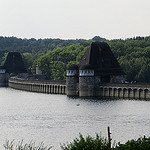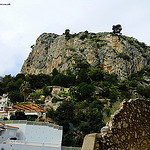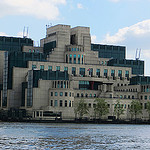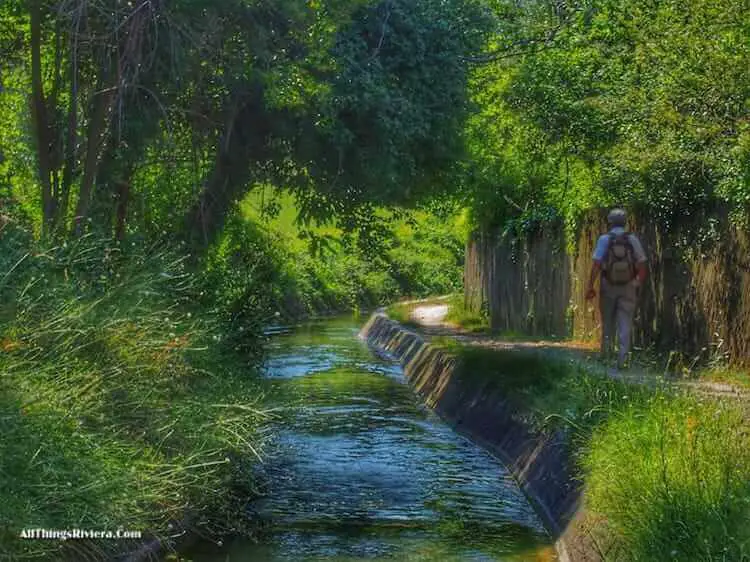This is a question that every traveller will, sooner or later, have to answer: is it right to only see or visit what is beautiful at my destination, or should I go for a rounder picture that also includes the typical and the truthful?
Lets us say, we are visiting Italy
: do we concentrate on the most beautiful bits of the country – Florence and Venice, the Alps and the Riviera coastline – leaving out more problematic (and potentially more interesting) places such as Naples and Genoa?
And once we are in Florence: is it really fine to confine ourselves to an area of two or three blocks, to old churches and art museums, ignoring everything else? Modern Florence is a metropolis of 700,000 people. Is there really nothing else of interest than 500 year-old buildings, statues and paintings?
Ultimately, this is a question of temperament. It all boils down to a simple question: are you a blue pill or a red pill kind of person? Are you happy to live in a bubble, a fantasy that has been engineered for your convenience? Can you stomach the truth – or would you rather not know what might trouble you?
If you are not a red pill kind of person, I may flatter ourselves when I say that you have come to the wrong blog. But I am certain that you have come to our blog on the wrong day.
Because today’s post is all about Messina.
Messina: The Red Pill of Sicily

While tourist destinations, living on the kindness of strangers, need to be at their prettiest and most enchanting all the time, the hard work that is needed to keep these places afloat (energy generation, logistics and the operation of the transport infrastructure which is required to ship people as well as goods in and out) goes on somewhere else.
Tuscany has grubby Livorno, Venice has its ugly twin of Mestre on the other side of the lagoon, and Sicily has Messina, its gateway to the mainland.
Centres of public and commercial life can tell us a lot about the cities laid out around them. Palermo has the Quattro Canti where its four Old Town quarters – each of them with a distinct historical background – are meeting, Catania has a busy shopping mile around its UNESCO-protected Cathedral quarter.
Messina has the Piazza Cairoli.

Messina’s town centre is something you will find only rarely in Italy: a place almost entirely bereft of historical buildings. The WWII air bombardments have done their part, but the main culprit is the earthquake of 1908, the most destructive ever to strike Europe. More than 90 % of buildings in Messina were destroyed or irreparably damaged, and 75,000 people lost their lives.
In Messina’s small old town, the outside walls of the cathedral nave and its Gothic portal survived the quake …

… but the bell tower was beyond saving and entirely rebuilt in the 1930s.

The architects of the tower did a good job, however, staying just on the right side of medieval pastiche and adding a spectacular new feature, the world’s largest astronomical clock where scenes from the bible, the town’s history and classical mythology come together for a daily noon-time show.

Stay for this show when you happen to be there at mid-day, but here is a tip: you will enjoy it more if you have familiarized yourselves with the themes of the performance beforehand.
After that, take a walk in the streets around the cathedral. This part of town is not without charm, and you will also find small public gardens with the sort of lush urban vegetation which is so typical for Sicily.

Overall, the urban planners and politicians who were responsible for the city’s reconstruction have made the best of what they got. They commissioned, for example, works of modern art to stand right next to some of the few remaining ancient buildings, creating appealing and charming contrasts.
A good example is the Norman Church of the Santissima Annunziata dei Catalani, built in the 13th century.

Or, when only fragments of old buildings could be saved, they integrated them into the residential buildings that were about to take their place. This, too, creates some interesting optical effects.

There are certainly some things to discover on a walk through the quarter between Via XXIV Maggio and Via Garibaldi – such as a building designed by Gino Coppede, the most original of all 20th century Italian architects.
The Palazzo Weigert on Via Argentieri is only one of ten such Coppede works in Messina, all of which were erected during the reconstruction boom that followed the 1908 earthquake.

And there is even a bit of history, albeit history of a fairly recent kind: in 1955, the Palazzo Zanca, Messina’s City Hall, hosted the conference in which the last details of the soon-to-be-established European Economic Community were hammered out.

Right next to the Palazzo Zanca, we also found a good place to eat, the restaurant Casa & Putia, which is operated by a group of academics who are passionate about local food and traditional ways of preparing it. Our waiter that day (a Sunday) was a lawyer, and we were shown our table by a seismologist. The dishes at Casa & Putia are “Slow Food” at its best.
The most famous feature of Messina, the red pill of Sicily, however, is the strait which was named after the town because it is here where Sicily and the mainland come closer than anywhere else – at its narrowest, on the northern tip of Messina, the strait is only 3 km wide.

This will be your place of entry into Sicily unless you arrive by plane. Most people who come to Messina do so to cross this strait, not so much to look at it (like us). It certainly is a sight to behold, although you will have to go to Messina at its ugliest to take a close look: to the harbour area south of the train station.
This is a stretch of Sicilian coast without fishermen’s huts nor palm trees, but the detour is well worth it – for a look at one of the two borders that run through Italy.
The first is a blurred line somewhere between Rome and Naples that separates the North from the South, while the border in front of your eyes separates the Italian mainland from Sicily, in the words of the Italian writer Marco d’Eramo the country’s “most monoidentitarian and closed region (to the limits of impenetrability)”.
The reality of this border is the final truth of Messina and the whole of Sicily. A couple of visits have not been nearly enough for us to understand what it is, other than the water in the Strait of Messina, that divides the Italian mainland from Sicily.
But they were enough to leave us with the feeling that a cultural and psychological frontier indeed exists and that it is rooted in something deep and ancient. I guess this can only mean that we have to come back then to find out more.
For us, this was definitely not an addio to Sicily but an arriverderci.








